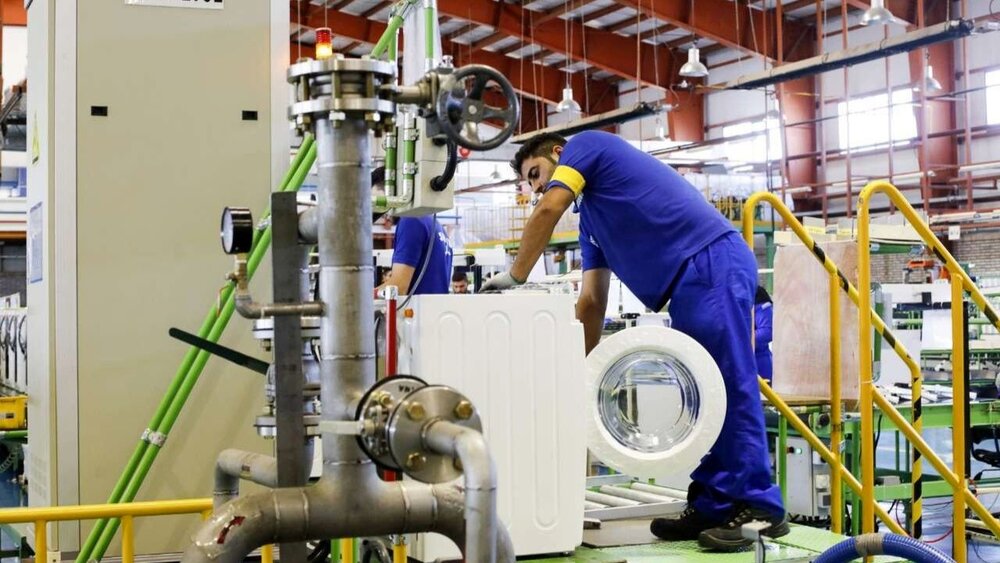17 idle industrial units revived in Qom province in 6 months

TEHRAN- As announced by a provincial official, 17 idle industrial units returned to the production cycle in Qom province, central Iran, in the first six months of the current Iranian calendar year (March 21-Septemebr 22).
Mahmood Seyjani, the head of Industry, Mining and Trade Department of Qom province, said that these units being revived have created jobs for 183 persons.
He said that 1.319 trillion rials (about $31.4 million) has been invested for reviving the mentioned units.
He mentioned textile, types of yarns, steel profiles and sections, steel wire, various types of construction and automotive paints, stone cutting, mineral chemicals, laboratory hoods, synthetic fibers, shoe uppers, and animal feed as some fields in which the revived units are active.
Technology change, attracting new investors, improving the market, launching a new line and producing a new product have been important factors in reviving 17 stagnant industrial units in the first six months of this year, according to the official.
As announced by the head of Iran Small Industries and Industrial Parks Organization (ISIPO), in the last Iranian calendar year (ended on March 20), 1,557 stagnant and semi-active units returned to the production cycle in the industrial parks with a financing of 35 trillion rials (over $833 million), providing employment for 27,000 people.
With the aim of reactivating stagnant units or units that are operating below capacity, 900 consultants from the private sector and knowledge-based companies were selected in the form of industry clinics across the country to recognize the weaknesses of these units, Ali Rasoulian has previously stated.
“Despite the two major challenges of sanctions and coronavirus pandemic, which imposed severe restrictions on the country, we tried to activate domestic capacities by turning to localizing the technology of manufacturing parts and equipment”, he added.
Sanctions have caused problems for financial exchanges and the export of goods to other countries, he said, adding, “The negative effects of coronavirus pandemic on various parts of the country, including industry, are not hidden from anyone, and the economic growth of some countries has reached below zero during this period.”
Iran is proud that despite these restrictions and pressure from these two important challenges, its industry has grown by more than seven percent, according to the statistics and reports from various sectors, the official further highlighted.
Also, as announced by Deputy Industry, Mining, and Trade Minister Mehdi Sadeqi Niaraki, over 6,500 new industrial units were established across the country during the past year which created jobs for over 121,000 people.
Touching upon the Industry Ministry’s plans for the realization of the motto of the current year which is named the year of “Production: support and the elimination of obstacles” by the Leader of the Islamic Revolution, the official has said: “In the year that has been dedicated to the production sector by the Leader of the revolution, the orientation of all government organizations and executive bodies should be towards supporting the country’s industrial and mining units.”
Niaraki pointed to a 40-percent increase in the issuance of establishment licenses for industrial units in the previous year, saying: “The number of establishment licenses increased to more than 36,000 last year, which shows that people are encouraged to invest in the productive sectors.”
He also mentioned an 85-percent rise in the allocation of land for establishing industrial units across the country and noted that over 4,500 hectares of land were handed over to applicants in the previous calendar year.
According to the official, there are over 46,000 small and medium-sized industrial units in Iran’s industrial parks and zones, of them about 9,200 units are inactive.
In late September, the ISIPO head announced the allocation of 10,000 hectares of land for the development and construction of industrial parks across the country.
According to Rasoulian, new industrial parks are mainly planned to be constructed in under-developed regions of the country.
The index for development of Industrial parks in the country has increased by five percent, the official stated.
He pointed out that one of the important priorities of the ISIPO is to provide suitable land for establishing industrial parks, adding: “The organization has prepared a plan to provide 10,000 hectares of land for this purpose.”
"Also, to supply electricity to industrial parks and zones, the required hardware and equipment, including posts and transmission lines, have been supplied and constructed in collaboration with the Energy Ministry."
He further noted that the country's industrial parks are currently facing over 2,000 liters of water deficit, saying: “Our approach to compensate for the water shortage is to use municipal wastewater, which we have communicated with the Ministry of Energy to purchase and have started using it in some areas.”
Rasoulian also mentioned the construction of small workshops for companies that do not have a high financial capacity and added: “Last year, 72 workshops were established in the country’s industrial parks and zones, and we hope that our plan for the current year, which was the construction of 1,000 workshops, will play a significant role in creating employment in the country.”
Iran’s industrial parks play a significant role in making the country independent through boosting production, which is a major strategy of Iran to combat the U.S. sanctions.
In fact, strengthening domestic production to achieve self-reliance is the most important program that Iran is following up in its industry sector in a bid to nullify the effects of the U.S. sanctions on its economy.
MA/MA

Leave a Comment